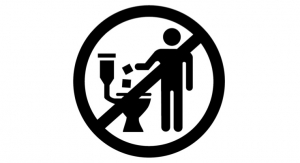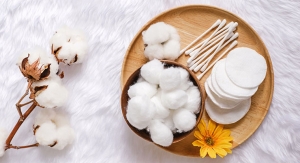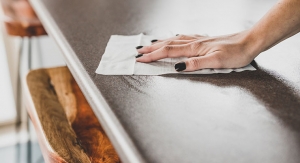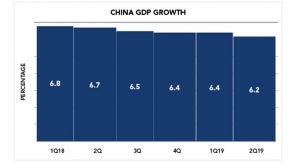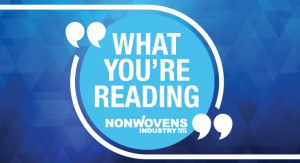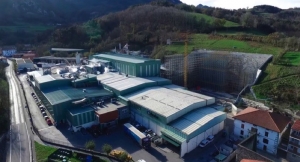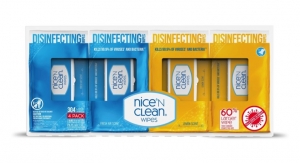Karen McIntyre, editor12.02.15
The year 2015 included investments, mergers and acquisitions and government regulations that will surely impact the nonwovens industry for years to come.
Growth is certainly continuing in nonwovens. As developing regions continue to show promising growoth, North America, perhaps the world’s most developed market has seen a resurgence with foreign investments. In years past, we have seen the marriage of some of the world’s largest nonwovens producers and in 2015 we have seen how this consolidation has panned out. Meanwhile, the focus on markets like adult incontinence and flushable wipes has put nonwovens in the headlines time and time again.
While many new stories were important to the global nonwovens industry, the following headlines stood out as having the most lasting impact on the shape of the future of nonwovens.
North American Investment
North American investment has been strong in 2015, led by expatriots looking to grow their businesses and please existing customers in the the region. In late 2014, Fibertex Nonwovens announced a plan to establish its first U.S. presence through the acquisition of Non Woven Solutions (NWS), a Chicago, IL-based manufacturer of needlepunch nonwovens. NWS reported sales of nearly $17 million in 2013 and the acquisition was valued at $25 million.
According to Fibertex executives, the acquisition was a logical next step for the strategic development of the company, which, in recent years, has expanded through acquisition in France and the Czech Republic and the creation of a greenfield site in South Africa and more recently an acquisition in Turkey.
Fibertex executives said the acquisition came at the urging of customers within the automotives segment who have been encouraging it to establish a North American presence. NWS meets this demand and also gives Fibertex access to several key market areas.
Meanwhile, a pair of greenfield investments will boostNorth American nonwovens production in 2016. In August, Turkey’s Mogul said it would establish its first overseas operation in North America. Mogul South Carolina Nonwovens Corporation will make spunlace nonwovens at an existing 91,000-square-foot building in Gray Court, SC. This plant will focus specifically on the production of spunlace nonwovens for medical, hygiene and personal wet wipes applications. Moving forward, Mogul expects to use its new facility to expand its product line.
“Mogul is excited to launch its new North American operations in Laurens County, SC. Through our new facility in South Carolina, we will be able to better serve our North American customers with our diverse offerings of quality nonwoven products,” says Mogul Tekstil, A.S. founder and chairman Ekrem Kayali. The facility is expected to be fully operational in the second quarter of 2016.
In September it was Sandler’s turn to invade North American soil. The German nonwovens producer is establishing a U.S. operation in Perry, Georgia. Sandler has been serving North American customers for many years hopes the establishment of this new site will create a new nonwovens powerhouse.
“Establishing a new nonwovens manufacturing plant in the U.S. is an important decision from a strategic point of view and one of the most important steps in our company history,” says CEO Dr. Christian Heinrich Sandler. “Establishing a presence in Perry will allow us to answer to the increasing importance of the North American markets and to account for the growing demand from outside Europe. Many of our clients are themselves global players, working on either side of the Atlantic. In this context, nonwovens for hygiene products are as important as our strongly growing involvement in acoustics, automotives and filtration.”
Flushable Wipes
To flush or not to flush. Flushable wipes have had their ups and downs this year, all of which have been well documented in the press. As the nonwovens industry continues to invest in new technologies and capacity to grow the market for moist toilet tissue and other flushable wipes, wastewater treatment agencies and other government outfits continue to question the accuracy of these flushability claims.
INDA, the Association of the Nonwovens Fabrics Industry, has been working hard to solve this problem. Some of the associations’ actions have included working with a number of wastewater agencies, the development of flushability and guidelines (the association is currently drafting a new edition of these) as well as general education and outreach activities.

The efforts are looking to combat actions like the FTC’s recent ruling that Nice-Pak cannot advertise its wipes as flushable until further proof of this claim can be substantiated (see page 14) as well as a number of lawsuits against companies like Kimberly-Clark, Procter & Gamble, Nice-Pak and Rockline Industries linking flushable wipes to millions of dollars in septic woes.
As the industry continues to work hard to defend flushable wipes against these claims, wipes manufacturers continue to believe enough in this technology to continue investment. Suominen Corporation, the world’s largest maker of wiping substrates globally, has committed to spending €60 million on a new wetlaid line in Bethune, SC. Output from this line will mainly target the flushable wipes market. Also investing in flushable wipes is Jacob Holm. The Swiss company completed work on a new line in Candler, NC, last year and has announced that much of the lines capacity will center around its Softflush flushable wipes technology.
Outside of the U.S., companies including Albaad and Aralar in Europe, Turkey’s a.s. nonwovens and China-based Dailan Ruiguang have also added new capacity geared toward the flushable wipes market.
New Reicofil Technology
In October, Pegas Nonwovens, one of the world’s largest users of Reicofil’s spunmelt technology, announced it would be the first company to use Riecofil’s latest technology—the S-Twin MB-s 2600 RF4 Compact BiCo line. This new platform offers lower capacity, and a lower initial investment, than other Reicofil lines.
Pegas reports the capacity on the new line will not exceed 10,000 tons per year, significantly less than other spunmelt investments which have ranged from 15,000 to 24,000 tons in recent years. Executives also cited lower investment costs and lower demands on infrastructures as reasons why it chose this line. Pegas established the Egyptian site in 2011 and had indicated a second line there would be forthcoming.
This new platform, of which Pegas is the first reported customer, represents a new day in the nonwovens industry. By offering potential customers a smaller line, Reifenhauser is lowering the cost of entry into the spunmelt market and offering opportunities for newcomers to the industry. Companies can still have all of the benefits of Reifenhauser technology like high processing speeds, lighter weights and fabric uniformity at a more affordable price point.
For existing customers like Pegas Nonwovens, which has been buying Reicofil lines regularly for more than a decade, the new technology allows a more gradual capacity increase, which is ideal for developing markets where growth is strong but instable. In announcing its new line, Pegas said it would allow it to gradually increase its capacity with minimal building modifications.
As for Reicofil, the new technology will help it attract up and comers in emerging markets like China or North Africa who could not meet the initial investment requirement for larger lines. The industry can likely expect to see more of these lines popping up around the world.
NC State Nonwovens Program Expansion
The nonwovens program at North Carolina State University is about to get a whole lot bigger. The Nonwovens Institute, which is the U.S.’s only accredited academic program in the field of engineered fabrics, will soon be housed in a state-of-the-art building and testing facility located right on the university’s Centennial Campus.
To be known as the Nonwovens Innovation and Technology Center, the new building will house a Reifenhauser Reicofil RF4 bicomponent spunbond line as well as hydroentanglement technology, a calender, as well as drying and winding capabilities provided by Andritz Perfojet. This new set-up will allow the Nonwovens Institute to run trials and develop technology in a wide application range. The center, which will also offer leased office space, should be through the construction phase in early to mid 2016 and be fully operational by October 2016.
According to Behnam Pourdeyhimi, executive director of the institute, the value of the equipment scheduled to go into the new center is around $20 million. In addition to supporting student research, the lab will be outsourced to member companies to do pilot research. The new line, which will be one of only a few of its kind in the world, will be able to produce lightweight and heavyweight fabrics both in existing nonwovens categories as well as in emerging markets, says Pourdeyhimi.
“We are excited about what this new line will bring to our research capabilities. Not only for our school but for the nonwovens industry. We could not have done this without our partners.”
According to its website, the Nonwovens Institute at NC State is an academic program for the interdisciplinary field of engineered fabrics. Described as an innovative global partnership between industry, government and academia, NWI receives several million dollars per year in memberships, private research and product development services. At any given time, the program supports about 70 graduate students and graduates about 10 per year.
PGI/Avintiv On Top
For the first time ever, a company other than Freudenberg topped the list of the world’s largest nonwovens producers in Nonwovens Industry’s annual ranking, which was published in September. Avintiv, which was known as Polymer Group Inc. until June 2015, rose to the top of the industry through a series of acquisitions and capital investments.
During the past couple of years, Avintiv, which was formed through a series of acquisitions including Fitesa North America, Chicopee and Scott Paper, has aggressively acquired a number of smaller producers including Fiberweb’s industrial business, Brazilian spunmelt producer Companhia Providencia, and Dounor, a Swedish nonwovens producer. These acquisitions helped propel Avintiv’s sales to nearly $2 billion in 2014, placing it at the top of the nonwovens industry. Investments also contributed to these increases. During the past couple of years, Avintiv has added new lines in North America, Europe and China.
Berry Buys Avintiv
However, Avintiv will not remain at the top of the pack for long. In October, Berry Plastics, a supplier of films and other components to the North American hygiene market, purchased Avintiv. In November, the company announced it would group the Avintiv business into its health, hygiene and specialties division. This division, which will be led by a former Avintiv executive Scott Tracy, also includes Berry’s hygiene films divisions.
The purchase of Avintiv (PGI Nonwovens) has not just made Berry Plastics the world’s largest nonwovens producer, it is also helping the Evansville, IN-based company achieve

several corporate goals. The acquisition will give Berry Plastics increased access to the global hygiene and healthcare markets and lessen its dependence on the food and beverage packaging segment, which comprised about 40% of sales prior to the deal. A reported 57% of Avintiv’s $2 billion 2014 sales were within the health and hygiene categories compared to 10% of Berry’s sales. Already, Berry and Avintiv share several key customers. In fact nine of Avintiv’s top 10 customers in these segments are also key Berry accounts.
Avintiv supplies polypropylene-based nonwovens that act as coverstock and absorbent material in diapers and feminine hygiene items while Berry sells backsheet materials, molded wrapping and fem care applicators to the same markets. From a supply perspective, the joining of these two companies will create one of the biggest customers of polypropylene resins globally. Together they source just short of two billion pounds of polypropylene annually.
Hygienix
It looks like INDA has another winner with Hygienix, its new absorbent products conference, which was held for the first time in late October. The event, which is a combination of two successful shows, INDA’s Vision Consumer Products Conference and Insight, Marketing Technology Services’ international conference, attracted more than 600 industry professionals.
“Hygienix exceeded our expectations for this new combined event,” says Dave Rousse, INDA president. “The positive response from the global hygiene and personal care markets validated our acquisition of Insight to merge it with Vision. The event provided attendees with valuable market intelligence, product insights and face-to-face interactions.”
The event featured topnotch expert speakers including Svetlana Uduslivaia of Euromonitor, INDA’s own Brad Kalil, diaper consultant Carlos Richer, absorbent products expert Pricie Hannah, Steven Gregg of the National Association for Continence and Kelly Lewis Brezoczky of Butterfly Health Inc.
A highlight of Hygienix was the presentation of the Visionary Award to Sienabena, LLC for BabyBackups, a diaper extender made of superabsorbent materials that adheres to the existing diaper to contain baby diaper explosions. Steve DeFrancesco, founder of the company, said he and his wife were inspired by their own daughter, a frequent diaper soiler, for the new product idea. He beat Always Discreet Bladder Protection by Procter & Gamble and X-Top Pouch for Men by McAirlaid’s, the other two finalists for the award.
Adult Incontinence Growth
In 2014, Procter & Gamble announced it would reenter the adult incontinence market. This news came as no surprise to anyone because of the high level of growth being seen in adult incontinence. During the last 15 years, roughly the amount of time P&G had been absent from the market—North American adult incontinence sales have tripled to reach $1.5 billion, according to experts. Global sales, now at $7 billion, are growing about 8.4% annually, faster than any other paper-based household product. With an estimated 25 million Americans experiencing incontinence symptoms, manufacturers are coming up with more solutions to these products. Traditionally, the market leader has been Kimberly-Clark with its Depend and Poise brands, and this company has been launching a steady stream of incontinence items. Meanwhile, industry newcomer Butterfly brands has received laurels for its body liners, which meets the needs of sufferers of accidental bowel leakage (ABL).
While Butterfly brands and P&G are newcomers to adult incontinence, market veteran Kimberly-Clark has made numerous efforts to make sure this business meets the needs of as many people as possible. Recent product introductions or innovations have included male guards and better fitting adult diapers. These efforts will surely pay off in the long, if not near, term. Already, there are signs that the adult incontinence market could challenge the disposable baby diaper market in terms of sales and volumes. Reports coming out of Japan indicate that adult diapers are outselling baby diapers, where nearly one in every four people is over 65 years old. While the U.S. market is not quite as dominated by adult incontinence, INDA estimated that adult incontinence product sales will outpace baby diapers and feminine hygiene products with an annual growth rate of 3.5%.
Growth Continues for Nonwovens
Global demand for nonwovens is forecast to rise 5.3% annually to nine metric tons in 2017. However, there is a great deal of variation among different regions and countries, according to market research. Countries with well developed manufacturing sectors and a population with relatively high personal incomes, such as the U.S., Japan, and Western European countries, have well established nonwovens markets. In these areas, nonwovens are prevalent in the production of a variety of goods, and individuals have the financial capability to purchase nonwoven-based consumer items. Most experts agree that demand for nonwovens in developed countries is expected to accelerate from the pace set from 2007-2012, when recessionary conditions for most of the period brought outright declines in manufacturing and construction activity. Despite the acceleration, growth in nonwovens demand in developed areas will remain well below the global average as continued industrialization and increasing personal incomes in developing countries promote nonwovens demand. Ongoing economic advances in China and other developing countries will promote the development of manufacturing sectors, providing opportunities for nonwovens in a variety of goods, such as filters. With respect to consumer goods, rising incomes and standards of living will propel individuals to purchase convenience items, promoting the production of disposable infant diapers among other items that are made with significant amounts of nonwoven fabrics. The largest regional market for nonwovens is the Asia Pacific region, with 39% of the global total. Two of the top three nonwovens consuming countries—China and Japan—are located in the region. Advances will be driven by China, which will account for 60% of the regional sales in 2017 and nearly 40% of additional global volume demand through 2017.
Growth is certainly continuing in nonwovens. As developing regions continue to show promising growoth, North America, perhaps the world’s most developed market has seen a resurgence with foreign investments. In years past, we have seen the marriage of some of the world’s largest nonwovens producers and in 2015 we have seen how this consolidation has panned out. Meanwhile, the focus on markets like adult incontinence and flushable wipes has put nonwovens in the headlines time and time again.
While many new stories were important to the global nonwovens industry, the following headlines stood out as having the most lasting impact on the shape of the future of nonwovens.
North American Investment
North American investment has been strong in 2015, led by expatriots looking to grow their businesses and please existing customers in the the region. In late 2014, Fibertex Nonwovens announced a plan to establish its first U.S. presence through the acquisition of Non Woven Solutions (NWS), a Chicago, IL-based manufacturer of needlepunch nonwovens. NWS reported sales of nearly $17 million in 2013 and the acquisition was valued at $25 million.
According to Fibertex executives, the acquisition was a logical next step for the strategic development of the company, which, in recent years, has expanded through acquisition in France and the Czech Republic and the creation of a greenfield site in South Africa and more recently an acquisition in Turkey.
Fibertex executives said the acquisition came at the urging of customers within the automotives segment who have been encouraging it to establish a North American presence. NWS meets this demand and also gives Fibertex access to several key market areas.
Meanwhile, a pair of greenfield investments will boostNorth American nonwovens production in 2016. In August, Turkey’s Mogul said it would establish its first overseas operation in North America. Mogul South Carolina Nonwovens Corporation will make spunlace nonwovens at an existing 91,000-square-foot building in Gray Court, SC. This plant will focus specifically on the production of spunlace nonwovens for medical, hygiene and personal wet wipes applications. Moving forward, Mogul expects to use its new facility to expand its product line.
“Mogul is excited to launch its new North American operations in Laurens County, SC. Through our new facility in South Carolina, we will be able to better serve our North American customers with our diverse offerings of quality nonwoven products,” says Mogul Tekstil, A.S. founder and chairman Ekrem Kayali. The facility is expected to be fully operational in the second quarter of 2016.
In September it was Sandler’s turn to invade North American soil. The German nonwovens producer is establishing a U.S. operation in Perry, Georgia. Sandler has been serving North American customers for many years hopes the establishment of this new site will create a new nonwovens powerhouse.
“Establishing a new nonwovens manufacturing plant in the U.S. is an important decision from a strategic point of view and one of the most important steps in our company history,” says CEO Dr. Christian Heinrich Sandler. “Establishing a presence in Perry will allow us to answer to the increasing importance of the North American markets and to account for the growing demand from outside Europe. Many of our clients are themselves global players, working on either side of the Atlantic. In this context, nonwovens for hygiene products are as important as our strongly growing involvement in acoustics, automotives and filtration.”
Flushable Wipes
To flush or not to flush. Flushable wipes have had their ups and downs this year, all of which have been well documented in the press. As the nonwovens industry continues to invest in new technologies and capacity to grow the market for moist toilet tissue and other flushable wipes, wastewater treatment agencies and other government outfits continue to question the accuracy of these flushability claims.
INDA, the Association of the Nonwovens Fabrics Industry, has been working hard to solve this problem. Some of the associations’ actions have included working with a number of wastewater agencies, the development of flushability and guidelines (the association is currently drafting a new edition of these) as well as general education and outreach activities.
As the industry continues to work hard to defend flushable wipes against these claims, wipes manufacturers continue to believe enough in this technology to continue investment. Suominen Corporation, the world’s largest maker of wiping substrates globally, has committed to spending €60 million on a new wetlaid line in Bethune, SC. Output from this line will mainly target the flushable wipes market. Also investing in flushable wipes is Jacob Holm. The Swiss company completed work on a new line in Candler, NC, last year and has announced that much of the lines capacity will center around its Softflush flushable wipes technology.
Outside of the U.S., companies including Albaad and Aralar in Europe, Turkey’s a.s. nonwovens and China-based Dailan Ruiguang have also added new capacity geared toward the flushable wipes market.
New Reicofil Technology
In October, Pegas Nonwovens, one of the world’s largest users of Reicofil’s spunmelt technology, announced it would be the first company to use Riecofil’s latest technology—the S-Twin MB-s 2600 RF4 Compact BiCo line. This new platform offers lower capacity, and a lower initial investment, than other Reicofil lines.
Pegas reports the capacity on the new line will not exceed 10,000 tons per year, significantly less than other spunmelt investments which have ranged from 15,000 to 24,000 tons in recent years. Executives also cited lower investment costs and lower demands on infrastructures as reasons why it chose this line. Pegas established the Egyptian site in 2011 and had indicated a second line there would be forthcoming.
This new platform, of which Pegas is the first reported customer, represents a new day in the nonwovens industry. By offering potential customers a smaller line, Reifenhauser is lowering the cost of entry into the spunmelt market and offering opportunities for newcomers to the industry. Companies can still have all of the benefits of Reifenhauser technology like high processing speeds, lighter weights and fabric uniformity at a more affordable price point.
For existing customers like Pegas Nonwovens, which has been buying Reicofil lines regularly for more than a decade, the new technology allows a more gradual capacity increase, which is ideal for developing markets where growth is strong but instable. In announcing its new line, Pegas said it would allow it to gradually increase its capacity with minimal building modifications.
As for Reicofil, the new technology will help it attract up and comers in emerging markets like China or North Africa who could not meet the initial investment requirement for larger lines. The industry can likely expect to see more of these lines popping up around the world.
NC State Nonwovens Program Expansion
The nonwovens program at North Carolina State University is about to get a whole lot bigger. The Nonwovens Institute, which is the U.S.’s only accredited academic program in the field of engineered fabrics, will soon be housed in a state-of-the-art building and testing facility located right on the university’s Centennial Campus.
To be known as the Nonwovens Innovation and Technology Center, the new building will house a Reifenhauser Reicofil RF4 bicomponent spunbond line as well as hydroentanglement technology, a calender, as well as drying and winding capabilities provided by Andritz Perfojet. This new set-up will allow the Nonwovens Institute to run trials and develop technology in a wide application range. The center, which will also offer leased office space, should be through the construction phase in early to mid 2016 and be fully operational by October 2016.
According to Behnam Pourdeyhimi, executive director of the institute, the value of the equipment scheduled to go into the new center is around $20 million. In addition to supporting student research, the lab will be outsourced to member companies to do pilot research. The new line, which will be one of only a few of its kind in the world, will be able to produce lightweight and heavyweight fabrics both in existing nonwovens categories as well as in emerging markets, says Pourdeyhimi.
“We are excited about what this new line will bring to our research capabilities. Not only for our school but for the nonwovens industry. We could not have done this without our partners.”
According to its website, the Nonwovens Institute at NC State is an academic program for the interdisciplinary field of engineered fabrics. Described as an innovative global partnership between industry, government and academia, NWI receives several million dollars per year in memberships, private research and product development services. At any given time, the program supports about 70 graduate students and graduates about 10 per year.
PGI/Avintiv On Top
For the first time ever, a company other than Freudenberg topped the list of the world’s largest nonwovens producers in Nonwovens Industry’s annual ranking, which was published in September. Avintiv, which was known as Polymer Group Inc. until June 2015, rose to the top of the industry through a series of acquisitions and capital investments.
During the past couple of years, Avintiv, which was formed through a series of acquisitions including Fitesa North America, Chicopee and Scott Paper, has aggressively acquired a number of smaller producers including Fiberweb’s industrial business, Brazilian spunmelt producer Companhia Providencia, and Dounor, a Swedish nonwovens producer. These acquisitions helped propel Avintiv’s sales to nearly $2 billion in 2014, placing it at the top of the nonwovens industry. Investments also contributed to these increases. During the past couple of years, Avintiv has added new lines in North America, Europe and China.
Berry Buys Avintiv
However, Avintiv will not remain at the top of the pack for long. In October, Berry Plastics, a supplier of films and other components to the North American hygiene market, purchased Avintiv. In November, the company announced it would group the Avintiv business into its health, hygiene and specialties division. This division, which will be led by a former Avintiv executive Scott Tracy, also includes Berry’s hygiene films divisions.
The purchase of Avintiv (PGI Nonwovens) has not just made Berry Plastics the world’s largest nonwovens producer, it is also helping the Evansville, IN-based company achieve
Avintiv supplies polypropylene-based nonwovens that act as coverstock and absorbent material in diapers and feminine hygiene items while Berry sells backsheet materials, molded wrapping and fem care applicators to the same markets. From a supply perspective, the joining of these two companies will create one of the biggest customers of polypropylene resins globally. Together they source just short of two billion pounds of polypropylene annually.
Hygienix
It looks like INDA has another winner with Hygienix, its new absorbent products conference, which was held for the first time in late October. The event, which is a combination of two successful shows, INDA’s Vision Consumer Products Conference and Insight, Marketing Technology Services’ international conference, attracted more than 600 industry professionals.
“Hygienix exceeded our expectations for this new combined event,” says Dave Rousse, INDA president. “The positive response from the global hygiene and personal care markets validated our acquisition of Insight to merge it with Vision. The event provided attendees with valuable market intelligence, product insights and face-to-face interactions.”
The event featured topnotch expert speakers including Svetlana Uduslivaia of Euromonitor, INDA’s own Brad Kalil, diaper consultant Carlos Richer, absorbent products expert Pricie Hannah, Steven Gregg of the National Association for Continence and Kelly Lewis Brezoczky of Butterfly Health Inc.
A highlight of Hygienix was the presentation of the Visionary Award to Sienabena, LLC for BabyBackups, a diaper extender made of superabsorbent materials that adheres to the existing diaper to contain baby diaper explosions. Steve DeFrancesco, founder of the company, said he and his wife were inspired by their own daughter, a frequent diaper soiler, for the new product idea. He beat Always Discreet Bladder Protection by Procter & Gamble and X-Top Pouch for Men by McAirlaid’s, the other two finalists for the award.
Adult Incontinence Growth
In 2014, Procter & Gamble announced it would reenter the adult incontinence market. This news came as no surprise to anyone because of the high level of growth being seen in adult incontinence. During the last 15 years, roughly the amount of time P&G had been absent from the market—North American adult incontinence sales have tripled to reach $1.5 billion, according to experts. Global sales, now at $7 billion, are growing about 8.4% annually, faster than any other paper-based household product. With an estimated 25 million Americans experiencing incontinence symptoms, manufacturers are coming up with more solutions to these products. Traditionally, the market leader has been Kimberly-Clark with its Depend and Poise brands, and this company has been launching a steady stream of incontinence items. Meanwhile, industry newcomer Butterfly brands has received laurels for its body liners, which meets the needs of sufferers of accidental bowel leakage (ABL).
While Butterfly brands and P&G are newcomers to adult incontinence, market veteran Kimberly-Clark has made numerous efforts to make sure this business meets the needs of as many people as possible. Recent product introductions or innovations have included male guards and better fitting adult diapers. These efforts will surely pay off in the long, if not near, term. Already, there are signs that the adult incontinence market could challenge the disposable baby diaper market in terms of sales and volumes. Reports coming out of Japan indicate that adult diapers are outselling baby diapers, where nearly one in every four people is over 65 years old. While the U.S. market is not quite as dominated by adult incontinence, INDA estimated that adult incontinence product sales will outpace baby diapers and feminine hygiene products with an annual growth rate of 3.5%.
Growth Continues for Nonwovens
Global demand for nonwovens is forecast to rise 5.3% annually to nine metric tons in 2017. However, there is a great deal of variation among different regions and countries, according to market research. Countries with well developed manufacturing sectors and a population with relatively high personal incomes, such as the U.S., Japan, and Western European countries, have well established nonwovens markets. In these areas, nonwovens are prevalent in the production of a variety of goods, and individuals have the financial capability to purchase nonwoven-based consumer items. Most experts agree that demand for nonwovens in developed countries is expected to accelerate from the pace set from 2007-2012, when recessionary conditions for most of the period brought outright declines in manufacturing and construction activity. Despite the acceleration, growth in nonwovens demand in developed areas will remain well below the global average as continued industrialization and increasing personal incomes in developing countries promote nonwovens demand. Ongoing economic advances in China and other developing countries will promote the development of manufacturing sectors, providing opportunities for nonwovens in a variety of goods, such as filters. With respect to consumer goods, rising incomes and standards of living will propel individuals to purchase convenience items, promoting the production of disposable infant diapers among other items that are made with significant amounts of nonwoven fabrics. The largest regional market for nonwovens is the Asia Pacific region, with 39% of the global total. Two of the top three nonwovens consuming countries—China and Japan—are located in the region. Advances will be driven by China, which will account for 60% of the regional sales in 2017 and nearly 40% of additional global volume demand through 2017.



